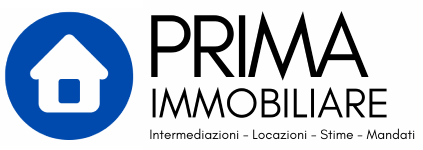Indipendent for sale , Terni, locality Acquapalombo
Voc. Acquapalombo
Stone townhouse, renovated with land in the Serra Park
- Price
- € 140.000
- Type
- Sale
- Category
- Indipendent
- Destination
- Residential
- Region
- Umbria
- City
- Terni
- Town
- Terni
- Locality
- Acquapalombo
- Area
- 178 sqm Details
- Commercial Area
- 297 sqm
- Rooms
- 5
- Bedrooms
- 3
- Bathrooms
- 2
A small village frozen in time, the Serra valley that frames stone houses, red roofs and a strong silence, tranquility, peace and traditions.
Words that describe the tiny village of Acquapalombo, a panoramic village on top of a gentle hill, surrounded by nature as far as the eye can see, a village that comes to life in summer where you go to enjoy the freshness and clean air of the area and that in winter is quiet and comforted by the few inhabitants who take care of it and love it.
Here, nestled among the other houses, there is a sky earth, touched by a major renovation that has brought to light its full potential and regenerated the powerful soul of the house.
The renovation works have been studied and done by skilled hands that have done justice to the historical value of the house, enriching it with recycled materials and historical pieces found in the area.
The property is spread over two levels, plus the cellars of 75sqm with the possibility of becoming a home, a warehouse of 14sqm and the land with olive trees.
The first house is located on the mezzanine floor, has stone cellars below and side access to the 300sqm land with olive trees and outdoor oven. We access the house from a characteristic stone pre-entrance with a new door but in a rustic style. We are welcomed by a large and bright room in which there is a fireplace with a wooden mouse from an ancient door. The kitchen is made of masonry, compact and well organized, with beautiful shades of blue that blend perfectly with the warm brown of the exposed beams of the ceiling. In the sleeping area there is a sitting room, a large double bedroom and a bathroom with window and shower.
The second house has the entrance on the opposite side of the structure and is located on the first floor, entering we find the open space living area, large, airy and with a high ceiling, immersed in a bathroom of light coming from the two windows that offer a breathtaking view of the valley. In this room there is a beautiful original fireplace on the floor. Continuing we find the double bedroom and the bathroom with shower.
In both houses you can see how much the renovation wanted to preserve the historic heart of the house, the stone and wooden details perfectly mixed with the new materials of the floors and walls of the bathrooms create something unique.
This real estate solution can be purchased alone or per apartment and is perfect for those who are looking for a second home where they can spend their holidays and escape from the summer heat, also ideal as an investment to create a b&b, in fact, the town of Acquapalombo is full not only of vacationers from Lazio, but also of tourists from all over Italy and the world who go to Umbria for sports or gastronomic tourism.
Contact us for a visit and immerse yourself with us in the green heart of Umbria.
Location information: A legend tells that a dove, while flying, spotted a source of water in a stretch of the path that led from Rocca San Zenone to Spoleto, and quenched its thirst. The place was called Acquapalombo, a name that also took on the settlement that formed near it. That spring has been used since the Middle Ages, a period to which the origin of Acquapalombo dates back, which coincides with the construction of the watchtower overlooking the town. Located at over 500 meters high, the tower was one of the two strongholds of the defensive system of Valserra, the other was represented by the Rocca di Battiferro on the opposite side.
The name of this castle is documented for the first time in 1332 through the register of taxes that the centers of the Terre Arnolfe paid to the Apostolic Camera, among which there is the "focatico" - in that year in Acquapalombo there were 61 hearths. In the following centuries, the castle was mainly under the jurisdiction of Spoleto and the object of Terni's expansionist aims. Probably at the end of the sixteenth century, Acquapalombo together with Appecano and Lavarino were annexed to the Municipality of Terni, since the General Council of Terni relieved these castles of taxes.
During the sixteenth century, the Sala family gave a new appearance to the village and moved there from Spoleto. The two most important buildings commissioned by the Spoleto family were the noble palace and the church of San Francesco, which was built, together with the adjoining hermitage, near the Serra stream and therefore outside the town. In this period the Romanesque church of San Lorenzo was also modified and enlarged, later frescoed. This phase of development, which led to a considerable increase in the population, with a consequent expansion of the town, ended when at the end of the 1600s the Sala family left the place, selling their properties to the Brancaleoni family. This passage marks the beginning of a lasting decadence, symbolized by the gradual deterioration that the noble palace underwent with the new lords, which was completely destroyed over time. However, the polychrome arch that framed the portal of the noble building remains on the square of the church of San Lorenzo.
Acquapalombo is part, together with the other villages of Valserra, of a context of extraordinary environmental and landscape value, whose beauty can be discovered and appreciated by walking or mountain biking along the paths that wind through the entire area, in total contact with nature.
TEXT AND INFORMATION FROM THE WEBSITE: VIVI TERNI
https://turismo.comune.terni.it/da-vedere/acquapalombo
Energy Class: ![]()

























































































































